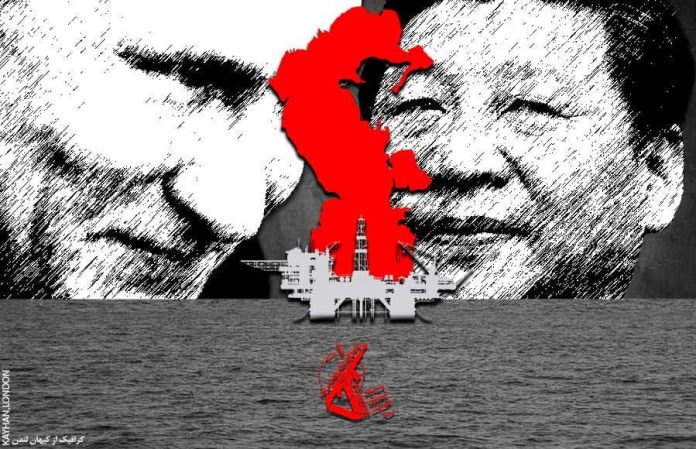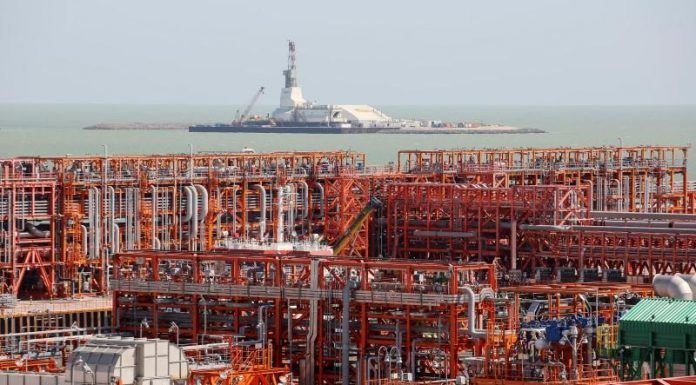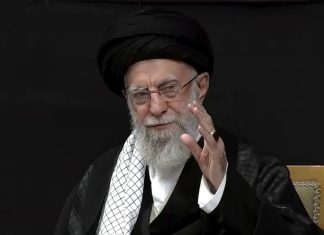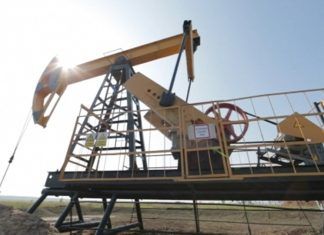By Kayhan Life Staff
In an article titled “Russia’s Biggest Move Yet to Take Control of the European Gas Market,” published in the Nov. 15 issue of the OilPrice news website, Simon Watkins, a former senior foreign exchange (FX) trader and financial journalist, explained the implications of a 20-year deal between Iran and Russia which includes developing and mining the Chalous gas field in the Caspian Sea and water reservoirs in Iran’s north.
“A deal finalized last week to develop Iran’s multi-trillion-dollar new gas discovery, the Chalous field, will see Russian companies hold the major share in it, followed by Chinese companies,” the article said. “This is despite Chalous’s position unequivocally within the Iranian sector of the Caspian Sea, over which the Islamic Republic has complete sovereignty.”
Senior commanders of the Islamic Revolutionary Guards Corps (IRGC) argue that giving a significant share of these lucrative projects to Russia and China is vital for developing Iran’s ballistic missile program.
“Billions of dollars in additional capital investment are scheduled to come from financial institutions in Germany, Austria, and Italy, as the indications are that the size of Chalous’s gas reserves is even greater now than initially thought,” the OilPrice article explained. “According to one of the senior Russian officials involved in negotiating the deal, ‘this is the final act of securing control over the European energy market.’”
Chalous’s gas reserves are as large as the South Pars Phase 11 conventional gas development, producing 1,000 million Cubic Feet per Day (MMCFD) of natural gas.
“As it now stands — revealed exclusively to OilPrice.com — following further studies by Russia, the Chalous discovery is now seen as essentially a twin-field site, nine kilometers apart, with ‘Greater’ Chalous having 5.9 trillion cubic meters (Tcm) of gas in place, and ‘Lesser’ Chalous having 1.2 Tcm of gas, giving a combined figure of 7.1 Tcm of gas,” the OilPrice article noted. “The new Chalous figures would give Iran a total natural gas reserves figure of 40.9 Tcm, whilst Russia — for a long time, the holder of the largest gas reserves in the world — officially has just under 48 Tcm.”
“The Russian figure, though, has not been revised to account for usage, wastage, and gas field degradation for many years, and, according to Russian gas sources, is around 38.99 Tcm as of the end of 2020. Consequently, the Chalous find makes Iran the biggest gas reserves holder in the world,” the report added.
“The new stake split in the combined Chalous twin-sites is as follows: Russia’s Gazprom and Transneft will together hold a 40 percent share, China’s National Petroleum Corporation (CNPC) and National Offshore Oil Corporation (CNOOC) together a 28 percent share, and the Khazar Exploration and Production Company (KEPCO) a 25 percent share only,” OilPrice added, quoting a source. “Gazprom will have overall responsibility for managing the Chalous development, Transneft will do the transportation and related operations, CNPC is doing a lot of the financing and providing the necessary banking facilities, and CNOOC will be doing the infrastructure parts and engineering.”
The OilPrice report points out that although KEPCO is named the Iranian party in the contract, the principal player in the deal is the IRGC and its engineering wing, Khatam al-Anbiya and other companies under its control.
“Although KEPCO will nominally be in charge of Iran’s limited operations on the Chalous site, the real management on Iran’s side will be in the hands of hydrocarbons companies closely associated with the IRGC,” the report noted. “The explanation as to why the IRGC has suddenly taken over the Iranian side of the project, is that the 7 percent left over after the stake splits above have been removed from 100 percent, is destined to be paid into two corporate accounts — one in Shanghai and the other in Macau — that are ultimately under the control of the IRGC. This is also the reason why the IRGC has played down the true level of the reserves in Chalous.”
“Aside from the enormous geopolitical value for Russia in adding the Chalous gas streams to the current gas supplies over which it has control, especially into the EU, Moscow is looking at an enormous financial payoff from its involvement in this field,” OilPrice noted. “Russia has calculated that, using an annual mean average figure of $800 per 1,000 cubic meters of gas (it has been much higher than this, of course, in recent weeks), the value of exports from Chalous at a comfortable rate of recovery from the site is at least $450 billion over the 20-year duration of the deal, which coincides with the next 20-year Iran-Russia deal.”
“After the 20-year deal is up, the agreement currently is that the IRGC corporate vehicle Khatam al-Anbiya will take over ownership of Chalous for the next 50 years. Given the likely length of gas recovery at Chalous — and the fact that Russia intends to take less than 10 percent of it out over the course of its 20-year deal — sources close to the deal estimate the total value of the Chalous gas site at $5.4 trillion,” the report added.
Speaking to the Iranian Labor News Agency (ILNA) on Nov. 1, Ardeshir Dadras, president of the compressed natural gas (CNG) trade union, said Iran did not have the right to mine the eight large gas fields in the Caspian Sea under the agreement with Russia.
In a tweet two days later, the Russian Embassy in Tehran dismissed Mr. Dadras’s remarks, describing them as a “deliberate incitement to undermine friendly relations” between the two countries.







